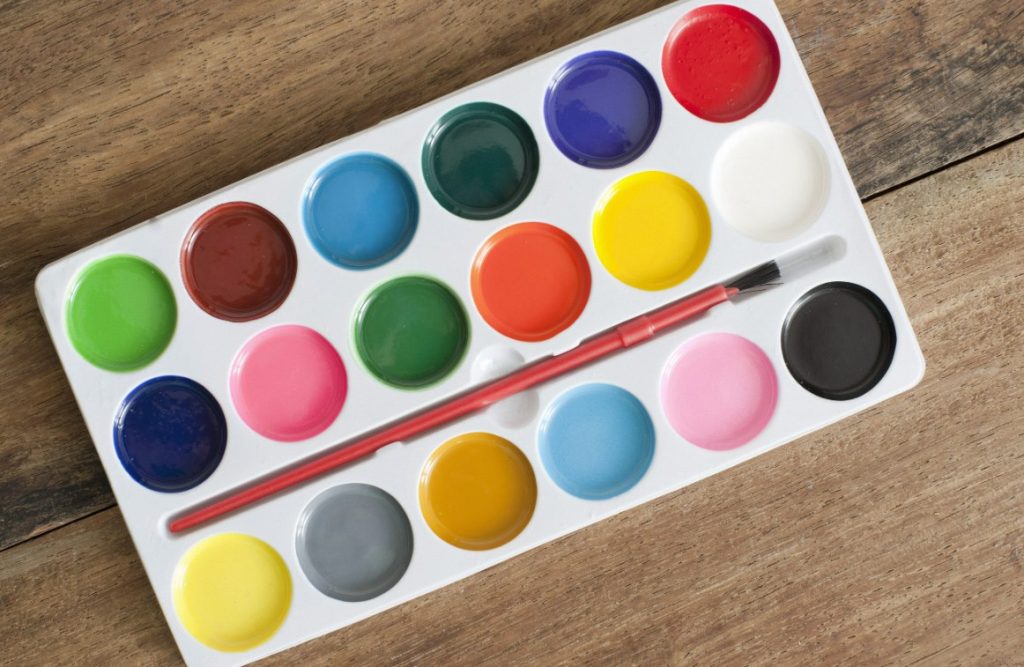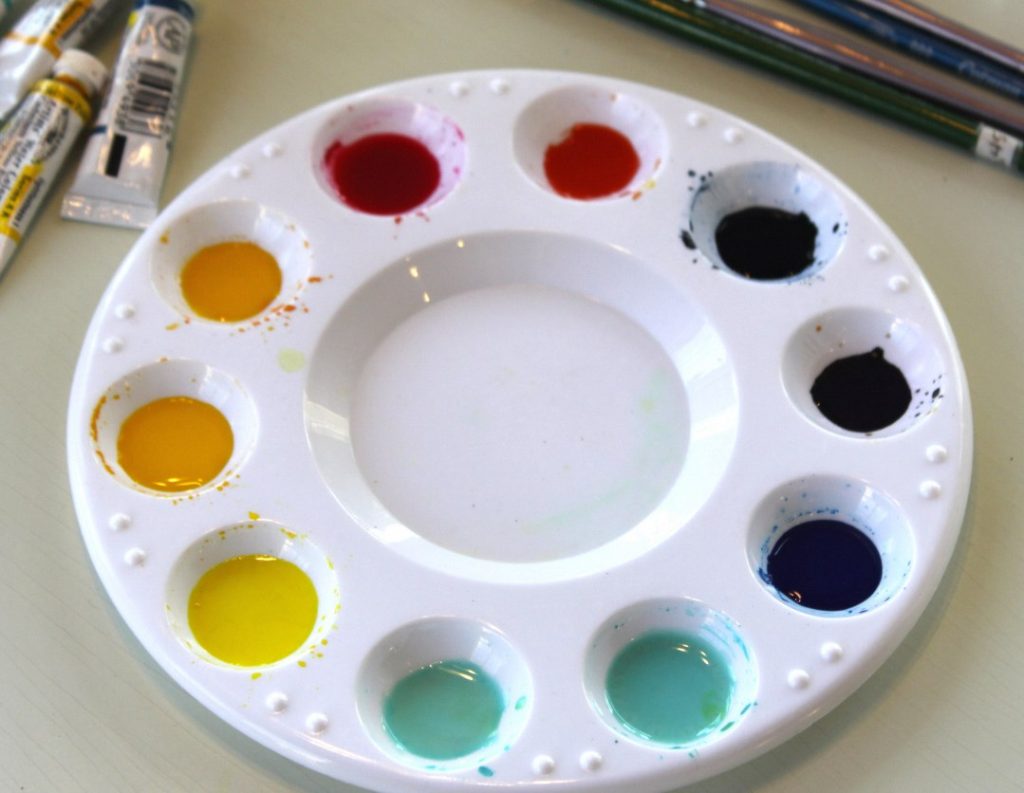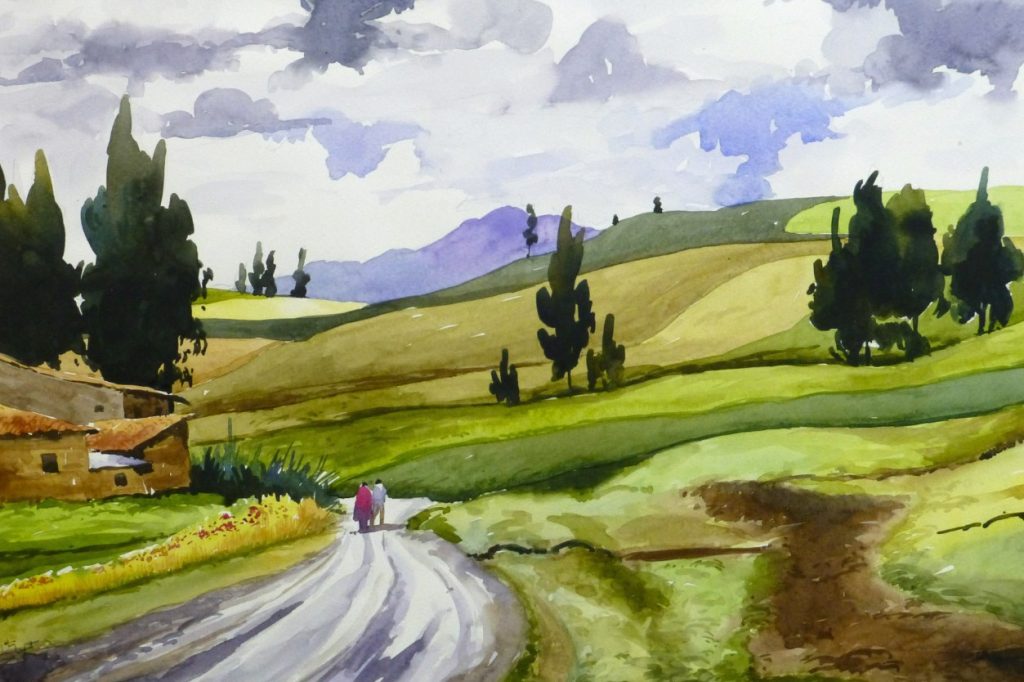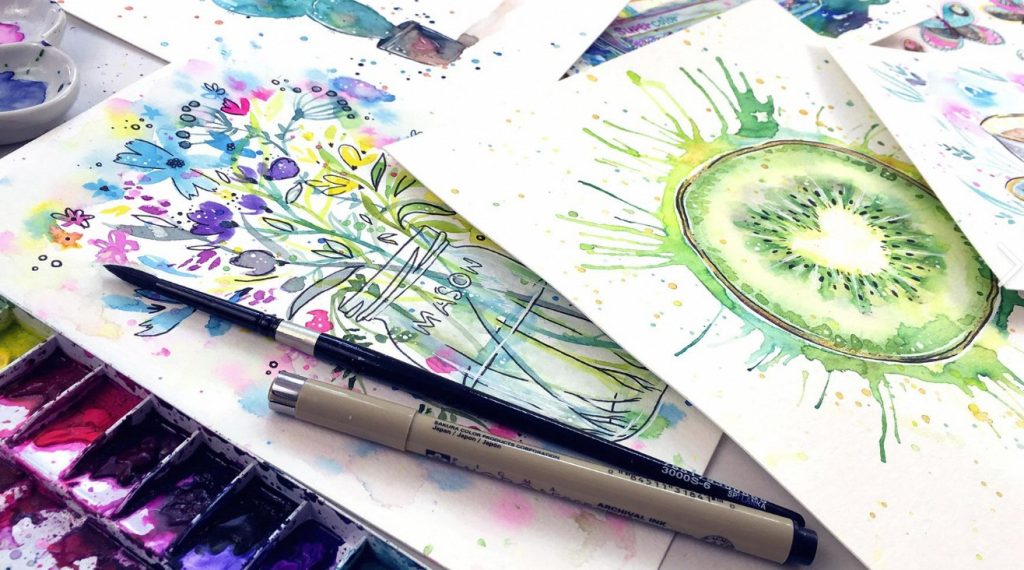Watercolor paints, with their vibrant transparency and ability to create soft washes, can be intimidating for beginners. But fear not! Mastering the basics of watercolor is surprisingly accessible, allowing you to create beautiful artwork in no time. This guide will unveil four key techniques that will empower you to embark on your watercolor journey with ease.
Part 1: Getting Started with Watercolor Supplies

1. Choosing Your Paints:
Watercolor paints come in various forms, but for beginners, pans are a perfect choice. They’re portable, require minimal setup, and offer a good range of colors. Opt for a limited palette of high-quality paints. While student-grade paints seem affordable, they lack vibrancy and transparency compared to professional-grade ones. Start with a few primary colors (red, yellow, blue) and a black for mixing.
2. Selecting the Right Paper:
Watercolor paper is essential for successful paintings. It absorbs water without buckling and comes in two main textures: hot-pressed and cold-pressed. Hot-pressed paper is smooth, ideal for fine details, while cold-pressed has more texture, perfect for looser styles. Paper weight is also crucial. Heavier weight paper (140 lbs/300 gsm or higher) is great for wet-on-wet techniques, while lighter weight (90 lbs/140 gsm) is portable and dries faster.
Part 2: Essential Watercolor Techniques
1. Creating Washes:

Washes serve as the cornerstone of watercolor painting, forming the basis for creating areas of flat, seamless color within an artwork. This technique entails applying diluted paint to achieve desired tones and hues. The level of transparency and intensity of the wash is determined by the amount of water used – a greater proportion of water results in a lighter and more transparent wash. Experimenting with various approaches to applying washes can yield diverse visual effects and textures. For instance, wetting the entire paper before dropping in colors allows for organic blending and the spontaneous intermingling of pigments, creating fluid and harmonious transitions. On the other hand, applying wet washes to dry paper offers greater control and precision, enabling artists to achieve defined edges and shapes within their compositions.
2. Mastering Brushstrokes:
Watercolor brushstrokes encompass a diverse range of forms, with each stroke imparting its own distinct character and visual impact on the artwork. When aiming to achieve flat, even washes of color, employing broad, horizontal brushstrokes is instrumental. Conversely, for the creation of intricate textures and nuanced details, artists often utilize scrubbing motions or employ the tip of the brush to impart specific marks. To gain mastery in executing these brushstrokes, it is advisable to engage in regular practice sessions on scrap paper, enabling you to observe and understand how paint and water interact, as well as how different brushstroke techniques manifest on paper. Central to achieving desired effects is the ability to control the quantity of water on the brush. A well-loaded brush facilitates the application of smooth washes, while a drier brush affords the opportunity to impart varied textures and finer details within the artwork.

Part 3: Simple Painting Techniques for Beginners
1. The Salt Effect:
To add an enticing and unique effect to your watercolor paintings, consider experimenting with the salt technique. This involves painting a wash of color and then sprinkling salt onto the wet surface. As the salt absorbs the water, it creates intriguing patterns, light areas, and distinctive textures within the wash. This technique can produce an array of mesmerizing effects, ranging from subtle speckling to more pronounced and elaborate textures, depending on the type of salt used and the amount applied. After allowing the paint to dry completely, gently brushing off the salt reveals the captivating textured patterns beneath, adding depth and complexity to the artwork. The salt technique offers a versatile and engaging way to introduce visual interest and dynamic textures to your watercolor paintings, and it’s a fascinating method to experiment with as you explore the diverse possibilities of the medium.
2. Wet-on-Wet Technique:
This particular watercolor technique is renowned for its ability to create stunning and soft blends. The process begins by thoroughly wetting your paper before dropping in various colors. As the colors spread on the wet paper, they organically bleed and blend together, resulting in seamless transitions and gentle, harmonious gradations. The inherently fluid nature of this technique allows for the creation of ethereal and dreamy effects, making it a favorite among watercolor artists for capturing subtle and delicate tones. Experimenting with diverse color combinations is key to uncovering the full potential of this method, as different pigments interact and meld in distinct ways, oftentimes leading to unexpected and captivating outcomes. By exploring the myriad possibilities afforded by this technique, artists are able to infuse their artworks with a sense of fluidity and softness, harnessing the medium’s inherent qualities to create evocative and visually enchanting watercolor paintings.

Part 4: Inspiration and Practice
1. Finding Inspiration:
Inspiration for your watercolor paintings can be found everywhere, whether in the natural world, everyday objects, or online sources. Take the time to observe the beauty of nature, where you can find an abundance of captivating subjects such as flowers, leaves, or fruits. These simple and familiar subjects provide an excellent starting point for beginners, allowing you to focus on mastering basic techniques without feeling overwhelmed. By observing these subjects closely, you can hone your skills in capturing shapes, colors, and textures, while also developing an understanding of light and shadow. Additionally, exploring online resources and art communities can provide a wealth of ideas and references for your watercolor artwork. Engaging with diverse sources of inspiration broadens your creative horizons and encourages experimentation, enabling you to translate your observations into beautiful and expressive watercolor paintings.
2. Practice Makes Perfect:

As with any art form, mastering watercolor takes dedication and practice. Set aside some time each day, even just a few minutes, to experiment. There are also numerous online tutorials and workshops available to guide you. Most importantly, have fun and enjoy the process! Embrace mistakes as learning opportunities, and with practice, you’ll be creating stunning watercolor artwork in no time.
Remember, these are just a few basic techniques to get you started. As you progress, you can explore more advanced methods like negative painting and layering for even more expressive artwork. With the right tools, some simple techniques, and a love of experimentation, you’ll be well on your way to becoming a confident watercolor artist!


